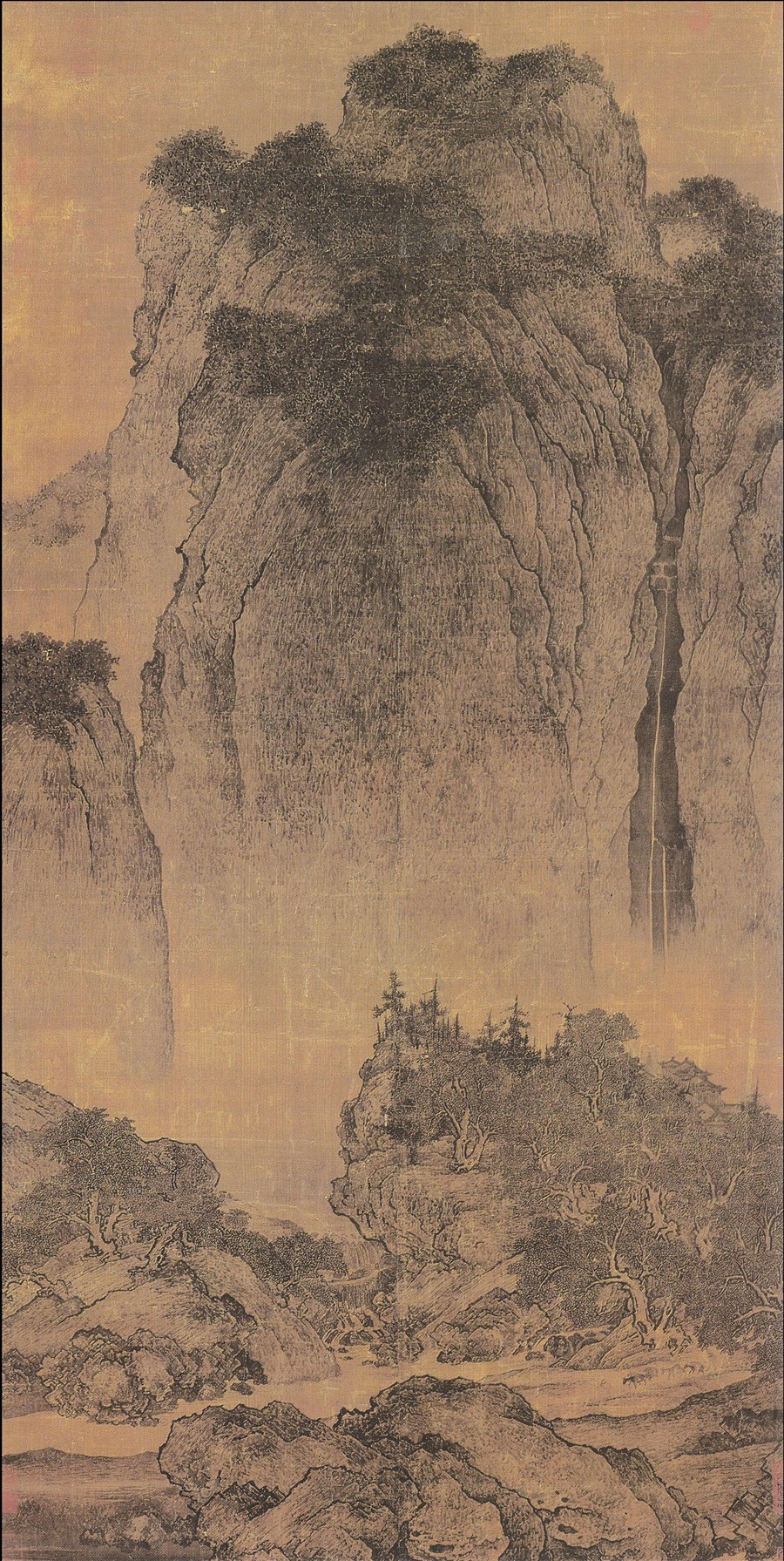Source: Shanghai Daily | October 4, 2015
1 of 3

In “Travelers Among Mountains and Streams,” the central mountain occupies nearly two-thirds of the painting while the tiny human figures and a mule train are barely visible as they emerge from a wooded area near the bottom.
AMONG ancient Chinese master landscape artists, Fan Kuan (AD 960-1027) stands head and shoulders above most. His best-known painting, “Travelers Among Mountains and Streams,” has long been deemed a seminal masterpiece of the Northern Song School.
Fan was born in Huayuan, now in Tongchuan area in northwestern China’s Shaanxi Province. It is said he hated urban life and loved to travel among towering mountains and live close to nature. He also loved wine and Taoist thinking, eventually becoming a Taoist recluse in his later years.
Today, however, Fan is remembered chiefly as one of the top landscapists in the early Song Dynasty (AD 960-1279).
Traditional Chinese ink-wash landscape painting began to appear in the Tang Dynasty (AD 618-907) and reached its heyday during the Song Dynasty.
Two major landscape art schools — the Northern Song School and the Southern Song School — had emerged by that time. Fan was a chief representative of the northern school. This style features clear, emphatic compositions and rich details that make the painting look very realistic.
A half-concealed temple on a foreground promontory serves as the “eye” of the landscape.
Chinese landscapists then began to follow some conventions such as what was defined as the “rule of scale” by Wang Wei (AD 699-761), a poet, musician, painter and statesman of the Tang Dynasty.
In one of his essays on landscape painting, Wang said if a mountain in a painting is one zhang (about 3.35 meters) tall, then a tree should be about one-tenth the size and a horse one-tenth of the tree and a figure even smaller.
Fan first modeled his work after those of earlier masters such as Jing Hao (circa 850-?) and Li Cheng (AD 919-967), but later he felt “observing and learning from nature is better than learning from man.” Eventually, he realized “the human heart is an even greater source than nature for learning.”
He gradually began to change his painting style. For instance, while his predecessor Li Cheng painted landscapes that “open like windows onto distant and attractive vistas,” Fan’s works tend to press close to viewers, blocking out their view like walls.
Fan had also developed a number of new landscape painting techniques such as using various texture strokes to create three-dimensional forms and overlapping ridges and contours to make a mountain appear to project forward.
Fan utilized many of his superb skills in “Travelers Among Mountains and Streams,” which is widely recognized as the greatest example of the monumental-landscape style of painting.
To embody the Taoist principle of man being just a small part of nature, Fan made the human figures rather small in order to dramatize the awesome power of nature.
To embody the Taoist principle of man being a small part of nature, the artist made the human figures rather tiny. The use of scale dramatizes the awesome power of nature.
In this ink on silk, 103.3cm by 206.3cm large hanging scroll, the central majestic mountain occupies nearly two-thirds of the total space.
The tiny human figures and a mule train can barely be seen walking out of a wooded area near the bottom of the painting.
A half-concealed temple on a foreground promontory serves as an “eye” of the landscape.
To evoke the Taoist idea of the interplay of yin and yang and add energy to the composition, Fan generated many sharp contrasts such as those between the foreboding mountain and miniature figures and animals, richly textured mountains and rock forms, as well as flowing streams and drifting mist.
The painting also features rich shades and tones, along with imposing and vigorous brushwork. It later became a model for numerous Chinese artists in the following centuries.
Many ancient masterpieces of traditional Chinese painting are today believed to be remakes of later years, but not Fan’s “Traveler” painting. In addition to some inscriptions by famous artists on the painting attributing it to Fan, the artist’s half-hidden signature was rediscovered in 1958, confirming its authenticity.
The painting belongs to the National Palace Museum in Taipei.


No comments:
Post a Comment